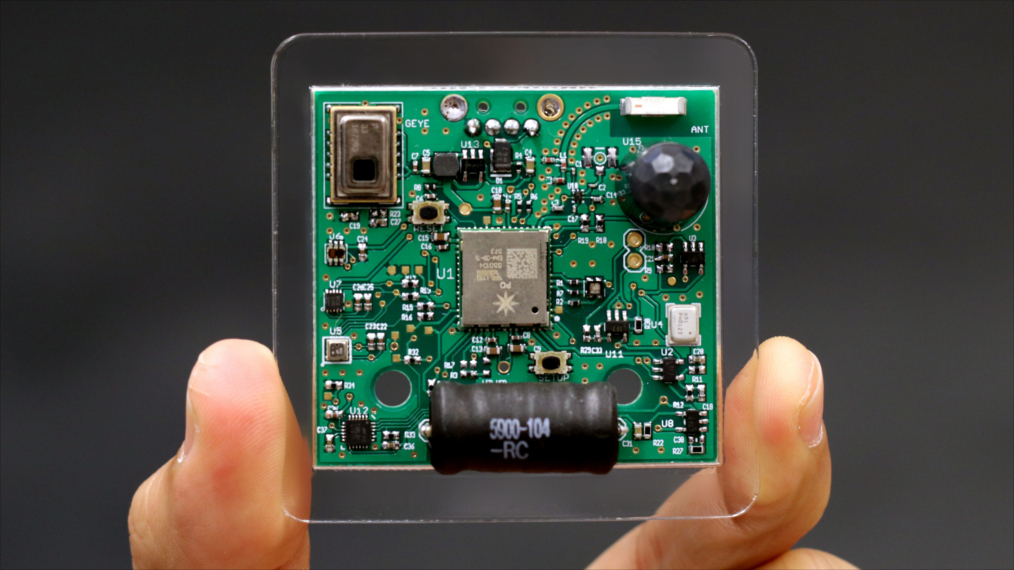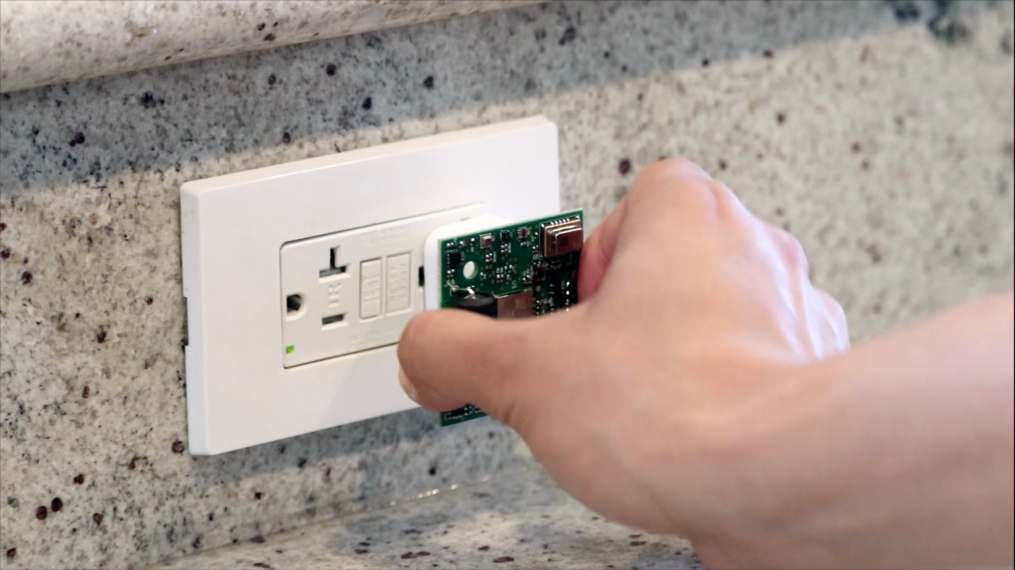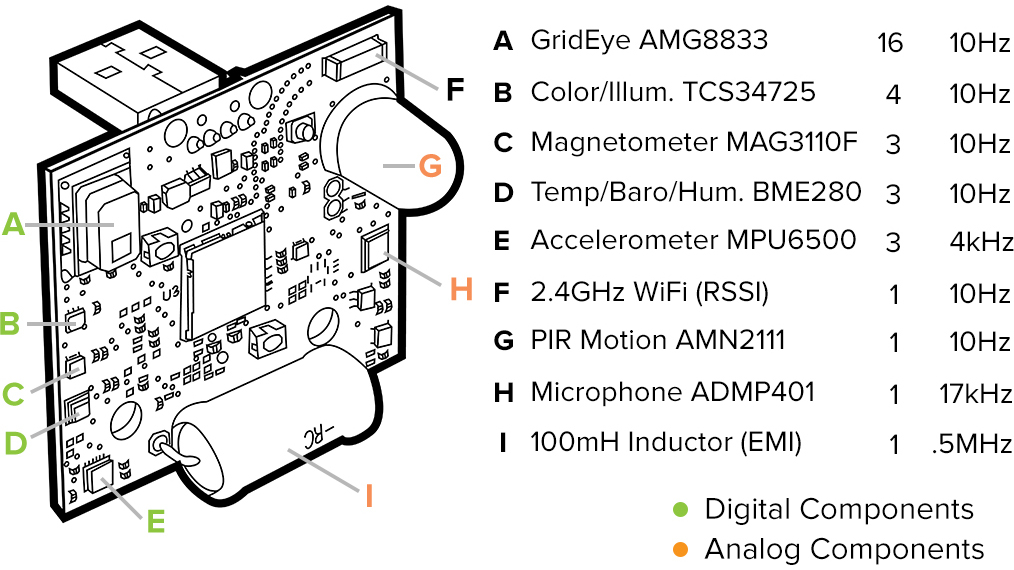Thanks to a recent Carnegie Mellon University project, users may soon have a third choice. What they call Synthetic Sensors is a single device that plugs into any electrical outlet to connect everything in a room.
While only a prototype, this tiny device captures a wide variety of environmental data to transform practically any household object into a smart device. It uses ten different sensors to constantly track metrics such as sound, humidity, electromagnetic noise, motion, and light. For privacy reasons, researchers excluded the use of a camera. The Synthetic Sensors then use machine learning algorithms to output that data as context-specific information. It’s like a universal remote for the home.
When a fridge is opened, it produces a unique signature. The device senses movement, sees the light come on, and hears the door creak. To a group of sensors, this sounds very different from a garbage disposal, faucet, or toaster. By training the Synthetic Sensors, the research team has created a wide variety of senseable objects and actions.
Modern day sensors have become so small and sophisticated that gathering the data from a single point has become easy. The difficult part involves figuring out what to do with the information. Lead researcher Gierad Laput figured out that it could be used to answer questions about someone’s environment. In a conversation with Wired, Laput explained their need to translate the data into accessible information. “The average user doesn’t care about a spectrogram of EMI emissions from their coffee maker,” he said. “They want to know when their coffee is brewed.”
Synthetic Sensors aren’t just limited to detecting one activity or device at a time. The suite of sensors allows it to detect a variety of inputs at once, although currently, this does not always work perfectly. “Doing this type of machine learning across a bunch of different sensor feeds and making it truly reliable under a bunch of different circumstances is a pretty tough problem,” says Anthony Rowe, another researcher working in sensor technology. “The easy solution in the short term is coming up with an interface that makes it easier for users to point out problems and retrain the system.”
As a proof of concept, the Synthetic Sensors lack a user-friendly interface. The bigger idea here is to use the device as a way to capture fine-grained data without the need for a camera. By adding this technology to something like Google Home or Alexa, the assistants would become more knowledgeable without becoming more intrusive.
Editors' Recommendations
- Ikea launching 3 new smart home safety gadgets in 2024
- How to create spooky Halloween effects with smart home lighting and sound
- U.S. government to launch a new cybersecurity program for smart home devices in 2024
- Your Google smart home devices just got a lot less talkative
- ElliQ is a smart home companion designed for your grandparents





